Chester Gould was the newspaper artist who gained fame for his cartoon character Dick Tracy and turned his idea into the Dick Tracy comic strip. The strip first appeared on Sunday, October 4, 1931, in the Detroit Mirror. Gould was an accomplished storyteller, and his dynamic imagination created numerous colorful villains that Tracy foiled with ease. The strip was solely Gould’s work until 1977.

It seems like a cliche these days, but Chester Gould really was born in a log cabin. His parents, Gilbert and Alice, were the children of pioneer settlers who moved to Pawnee, Oklahoma late in the 1880s. All four of his grandparents were pioneer settlers and one grandfather was a minister in the United Brethren Church. Chester was born on November 20, 1900.
While still a senior in high school, Chester was discovered by the yearbook staff at Oklahoma A & M University and was hired to make line drawings for the 1918 and 1919 editions.
One very peculiar aspect (and seldom before encountered circumstance) of Gould’s life came to light in his obituary published in the Crystal Lake, Illinois, newspaper. For an undiscovered reason there was no mention of Mr. Gould’s occupation as a cartoonist and the name “Dick Tracy” is not mentioned. He was 84 when he died May 11, 1985.
An exhaustive search did not happen, but after visits to some online auction sites, it seems that there are less than a dozen Dick Tracy postcard issues. There is one set of four from the war time era that has Tracy in his usual motif of finding clues and solving crimes.
Dick Tracy wore the same hat, the same suit, the same striped tie for more than 40 years. His appearance and fashion were two factors in making Tracy such a recognizable fellow and the reason he stands as a symbol of American pop culture. Known for his distinctive fedora, Tracy quickly became famous for his relentless pursuit of criminals in the fictional city of Securityville. From the start, Tracy’s adventures captivated audiences with a blend of dramatic narratives and innovative gadgets, such as the wrist communicator.
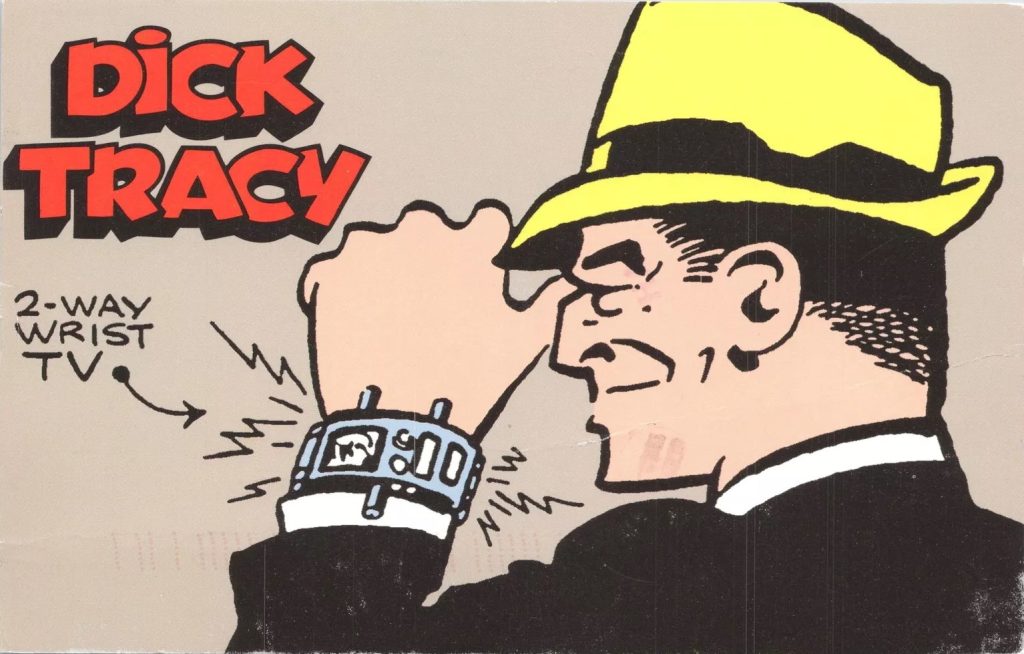
Tracy’s fame swelled because of the several adaptations of his adventures, including radio shows, television, graphic novels (comic books), and movies, notably the 1990 film featuring Warren Beatty.
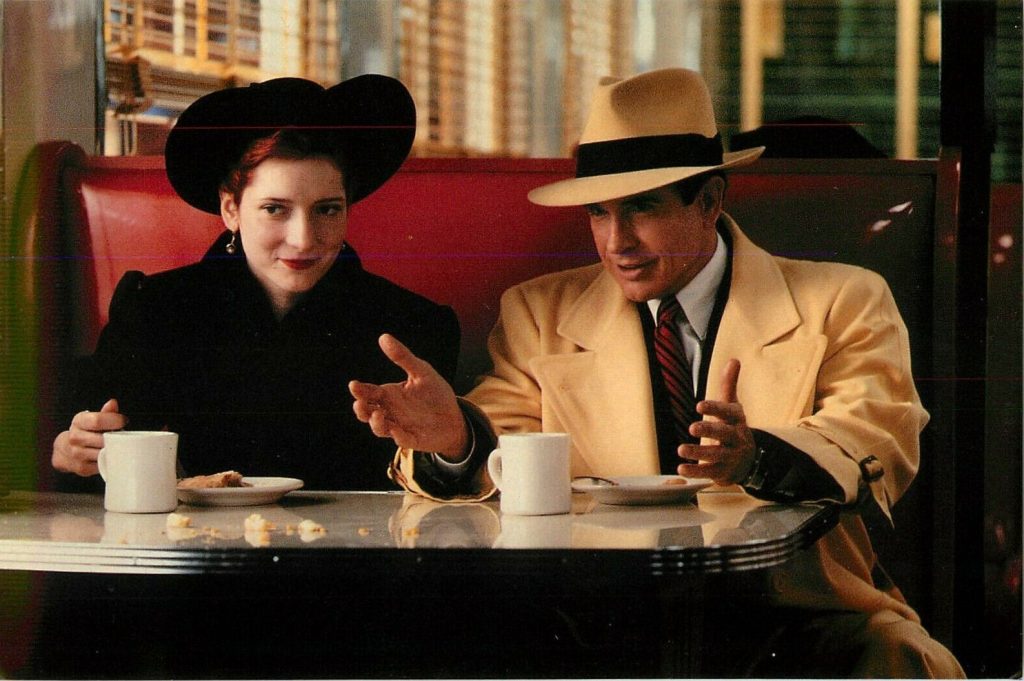
The character’s influence extended beyond entertainment, impacting law enforcement and media portrayals of detectives. Through his unyielding moral compass and clever tactics, Dick Tracy not only entertained generations but also highlighted societal issues such as crime and justice.
Stop and remember how many Dick Tracy “look alike” and “act alike” characters we have watched on television or read about in “murder mystery” literature over the last fifty years. To name only a few, there was Jessica Fletcher, a mystery writer and amateur sleuth who solved crimes in Cabot Cove, Maine; Columbo, a Los Angeles detective with a distinctive appearance that included his kitchen-table haircut and an old, rumpled raincoat; Andy Sipowicz, the insightful and clever NYPD Blue detective who often solved more than one crime in a single episode; and who could ever forget Theo Kojak, who always wanted to know, “Who loves ya, baby?” That would be the bald, lollipop-sucking New York detective who isn’t afraid to bend the rules to bust the bad guys. Cynical but upbeat, Kojak not only has a talent for detecting, he also is blessed with perfect parking karma – he is always able to find a parking space right at the crime scene, even in Manhattan.
And without apology Danny Reagan needs to be mentioned, he’s the hard-hitting NYPD “gold badge” holder who works for his father, Commissioner Frank Reagan on Blue Bloods which ends its fourteen-year run on CBS-TV this season.
But who are our favorite literary sleuths? Perhaps Sherlock Holmes, a detective with an equally famous sidekick – Dr. John Watson – created by Sir Arthur Conan Doyle; Nancy Drew, a well-known female detective who starred in a series of books created by Edward Stratemeyer in 1930s and are still popular 90 years later, and Hercule Poirot, Agatha Christie’s famous Belgian detective.
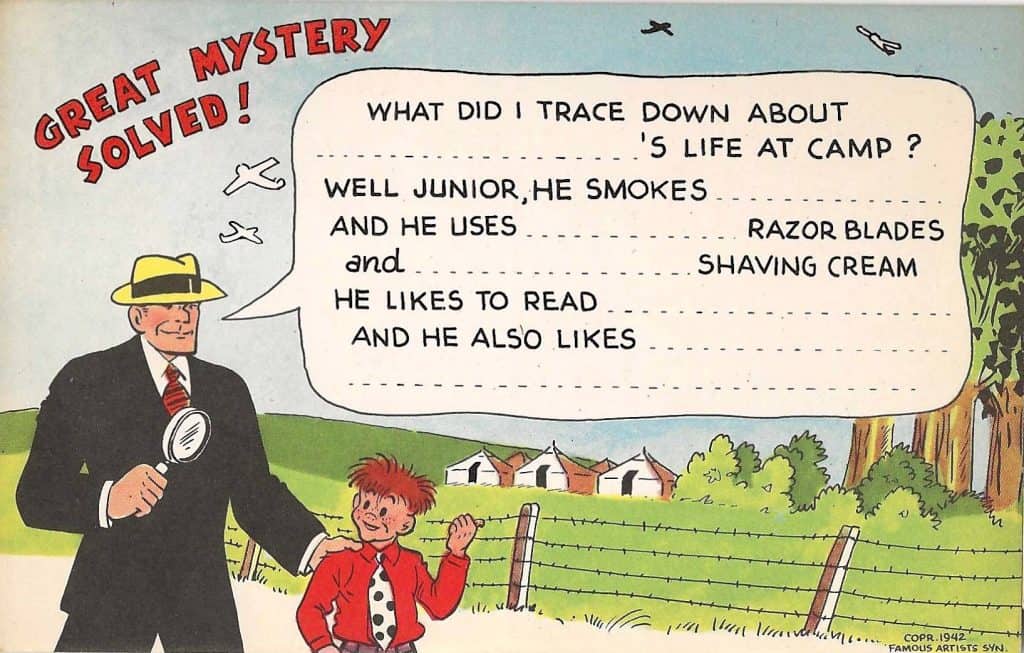
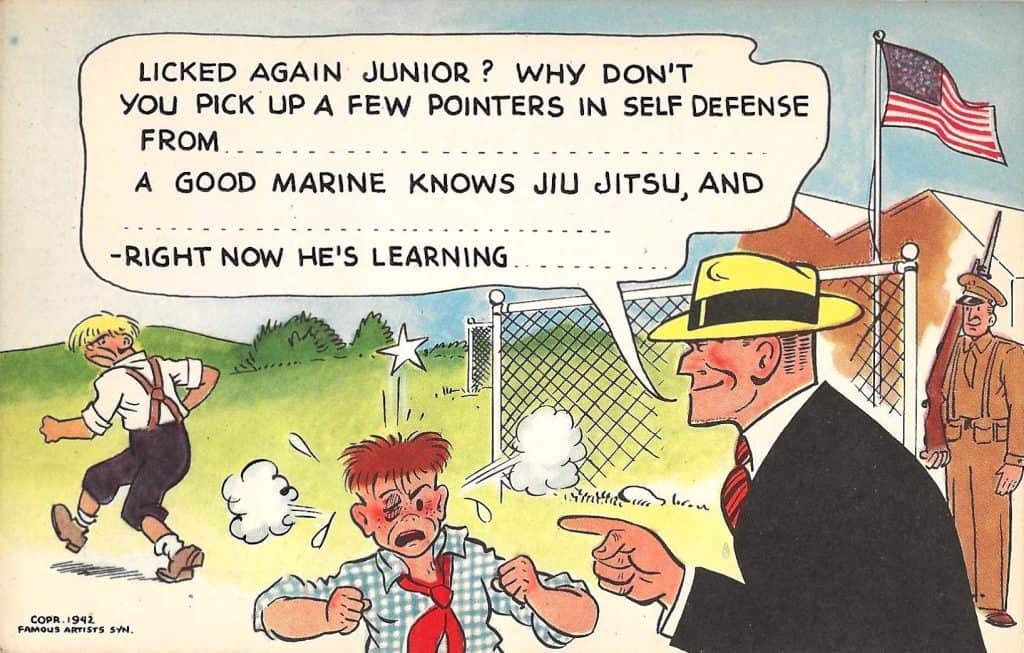
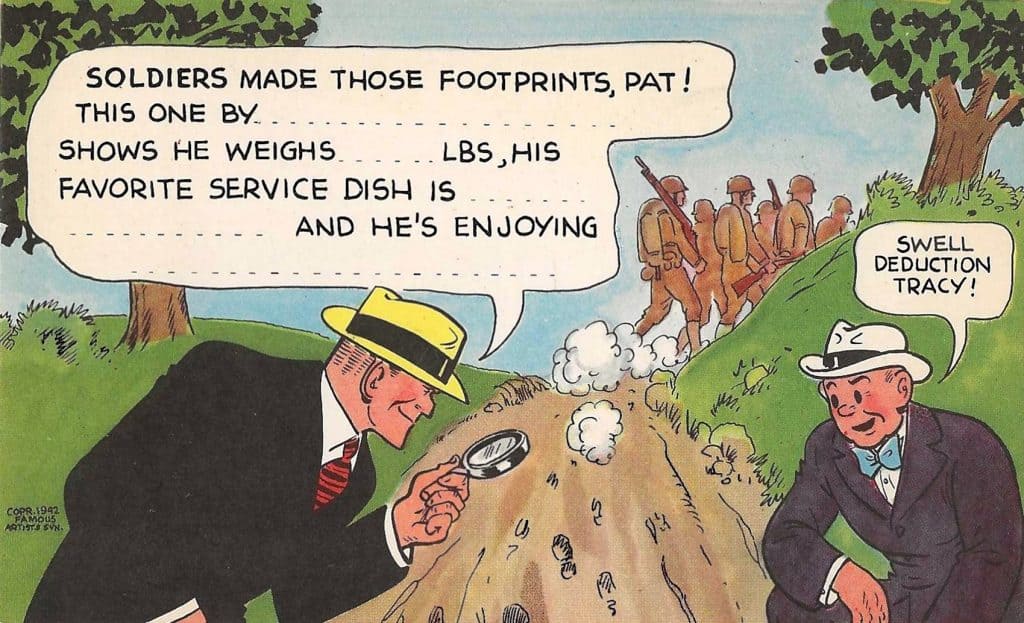
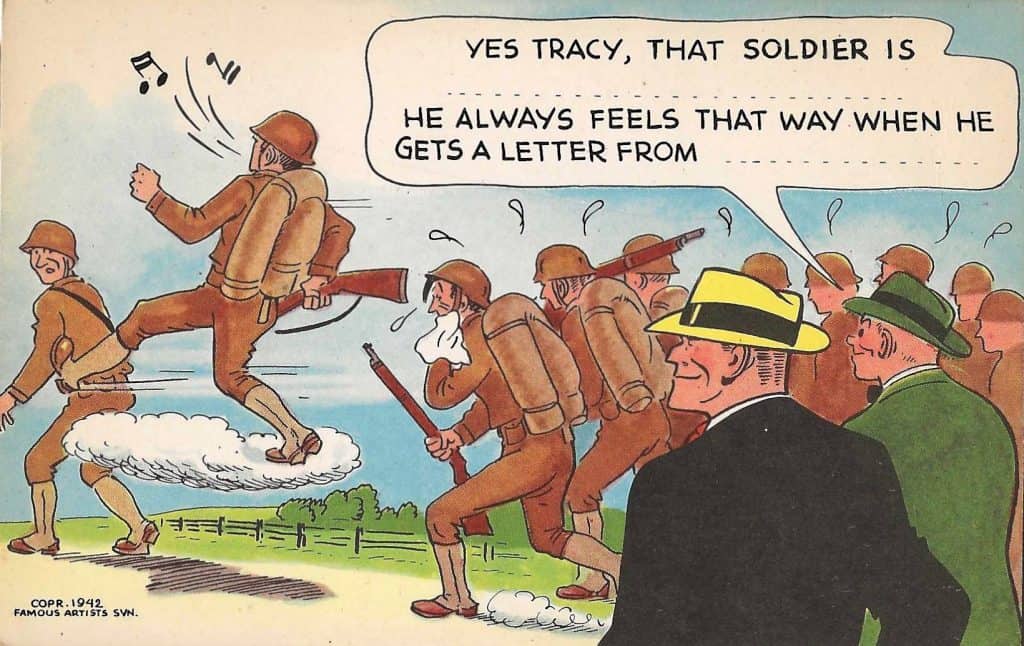
Interesting article and too bad the artist was not acknowledged in his life time.
Great recap of our favorite detectives over the years. I enjoyed seeing the Dick Tracy postcards from the war years.
Minor point: That is not Madonna in the photo. It is Glenne Headly who played Tess Trueheart.
Thanks for a very interesting article!
I remember that my brother clipped and saved the “Crimestoppers’ Textbook” feature from each Sunday’s Dick Tracy strip.
What a delightful article! I have two of these Dick Tracy cards in my inventory now. Perhaps to balance with Nancy Drew were the Hardy Boy series with Frank and Joe solving mysteries in the footsteps of their father.
Another comic strip series that produced some postcards was Popeye the Sailor.